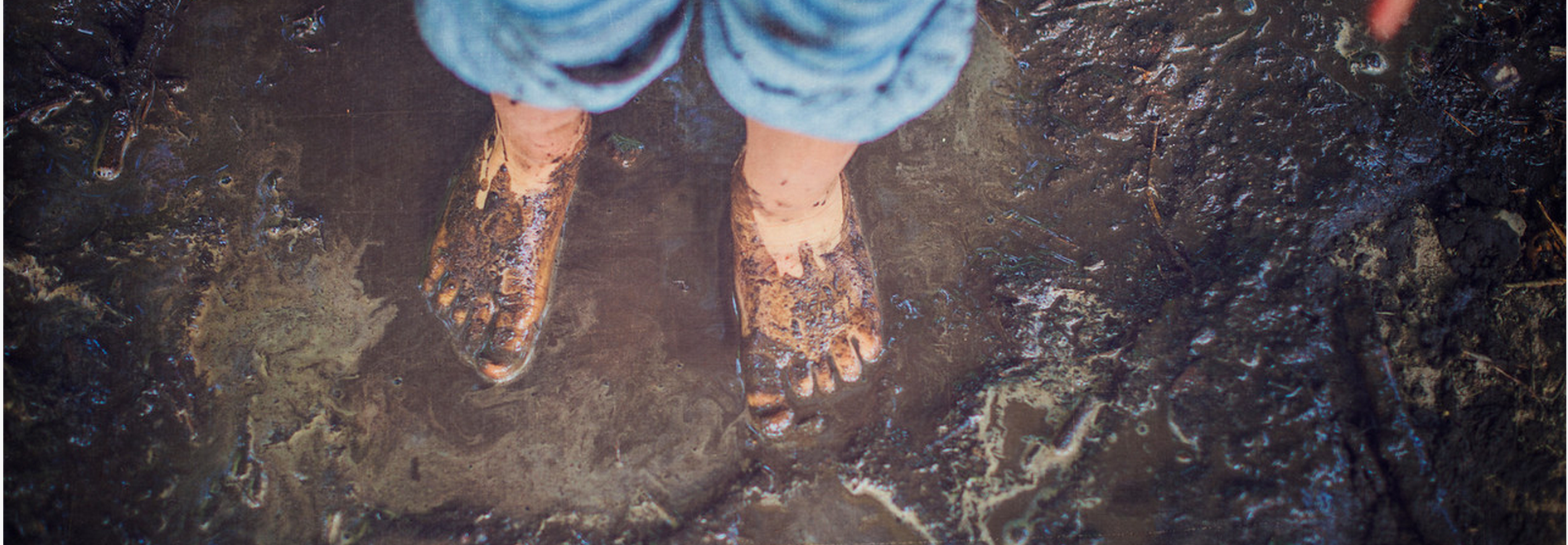Peek at the Treetops
-
Age: 3 to 8+
-
Time: <30 min
-
Materials: small mirror per child
- Skills: Critical Thinking, Curiosity, Gross Motor, Sensory, Naturalist
Tree Top Adventure for Kids
As we all rush about each day, we don't always take the time to notice the amazing world around us. It's a rare occasion that we stop in our tracks to take it all in. As bombarded as our kids are by sensory stimuli, without teaching them how to tune in, they run the risk of dulling their senses and developing a narrower view of the world.
This has huge implications for learning how to learn. So, after some active musing and experimenting, we settled on this simple activity for helping kids (literally) blow the ceiling off of their limited sense of the world. All you and your child need is a small mirror and at least 10 minutes to walk slowly around in the forest. They'll put the mirror on the bridge of their nose to get a personal glimpse of life at the treetops. As you encourage them to walk this way and notice how they feel and what they see, both brain and body will have a wild time communicating. This makes for a trippy (literally and figuratively) fun-house kind of ride in which kids experience their brains at work and their senses awakened.
The Guide
- Pick a good spot: This activity works in any outdoor space with trees, vines or rocks overhead. You can be deep in the forest, in a canyon or in a corner of your local park. To minimize stumbling, find a group of trees with minimal roots, holes, large rocks and other hazards on the ground around them.
- Pack mirrors: You’ll need a small mirror per kid, ideally without any border or frame. If you can find them, use plastic, steel or other safety mirrors. We used small camping mirrors.
- Position the mirrors: Help kids place the mirror on the bridge of their nose, just below their eyes. If they hold their hand just under the mirror and against the bridge of their nose (blocking their sight to the ground), the experience is even better. Immediately, they’ll get a clear view of the world up above. Encourage them to keep the mirror in place and walk slowly around to explore the treetops.
- Guide a bit: Suggest or model holding the mirrors at different angles to experience the world above and around in different ways. Chat about what kids notice as the angle changes.
- Talk: After the activity, try to get kids talking and elaborating on their experience. Ask, "What did you notice? How did that feel? Was it tricky to walk? Why do you think it was so hard? Was it still hard when you took the mirror away? Where else could we try this? Why would that place be interesting? How do you think your feet know where to step next when you are walking? How does that change when you put the mirror under your nose?"
Why is this activity great for kids?
Like all humans, a child’s brain uses what she sees to monitor and adjust placement of her body weight, enabling her to balance and coordinate movements like standing, walking, or climbing. It's a combination of gross motor skills and eye-body coordination we all rely on to walk about, participate in sports, dance and more. When a child holds a mirror to her nose, her eyes take in information that does not match what her feet encounter, disrupting her eye-body coordination and triggering her senses to wake up to help navigate the situation. For example, a kid will feel his body moving to avoid things that he sees in the mirror above, but of course are not actually on the ground. It all feels so real, and yet he can tell that it is not.
For younger kids (4-6), this is simply a highly engaging sensory experience that needs no further explanation. Because it captures their attention, they slow down and focus intently, helping them to develop self control. This unique experience also helps kids develop their sense of sight and what some experts call the sixth sense—proprioception. Proprioception is the internal sense that tells one where one's body parts are without having to look at them. It's critical for balance, body control and safe movement.
For older kids (7+), talking about the experience is a great entry point for discussing how the brain takes in sensory information and directs the body to act. Understanding how the brain works in this way is not only fascinating, it helps kids realize that sometimes our all-knowing command center can get confused. This simple but powerful idea can help kids build a bit of compassion for themselves and learn how to think critically about their own perceptions. As they practice walking with the mirror, they are burning new neural pathways, strengthening their ability to sense through touch and their capacity to balance out their dependency on sight.




